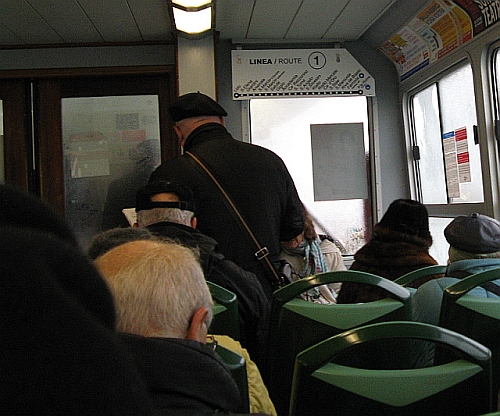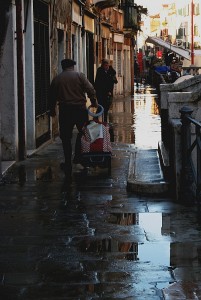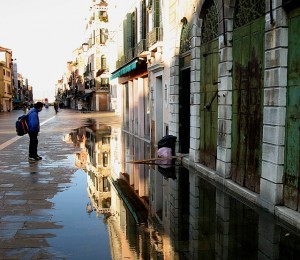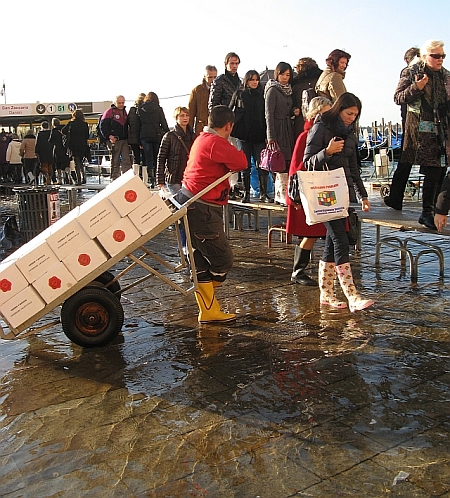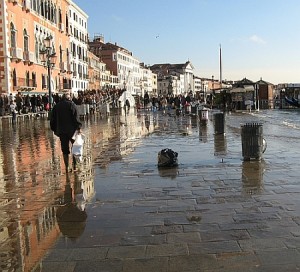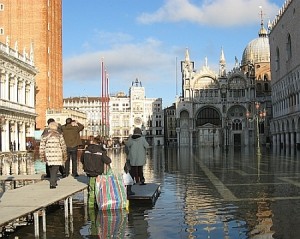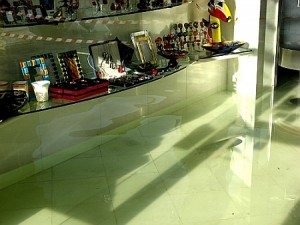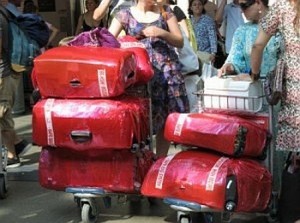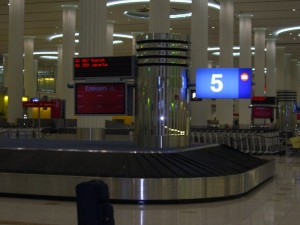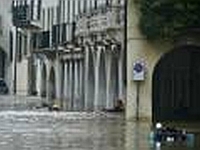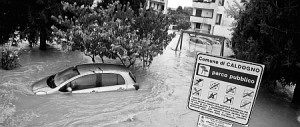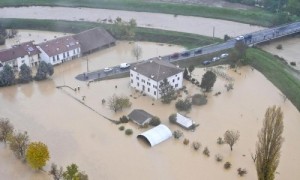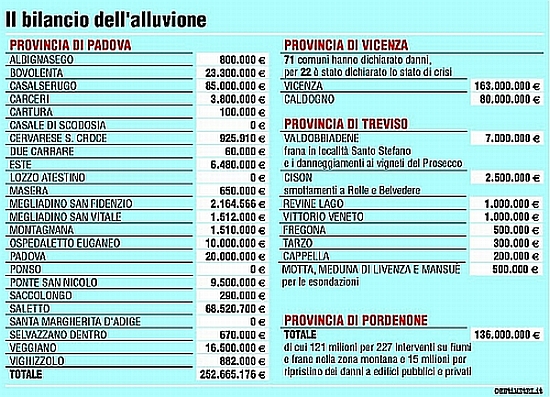I saw something today that I have longed — longed — to see, and had despaired of ever seeing. Ever. And had ceased to believe that my grandchildren, if I ever had any, would see it either.
Signs. They have finally installed signs showing route maps on the vaporettos indicating each blessed stop of the blessed line being ridden. You can’t believe it? I can’t either, but there they are.
Not only does the sign exist, it has been placed in a useful location (there's another on the other side of the aisle), and it's legible, unlike the other supposedly useful announcements you can just barely make out stuck to the right-hand window. They thought of everything.
The Big Cities I know have always done this on their buses and subways: New York, Paris, Moscow, London, Rome, San Francisco … I think Oslo, too, but I can’t remember at the moment. Probably. Norway’s supposed to have the highest quality of life of any place on the planet, and I’d put bus maps right up there with free flu shots in the Great Scheme of Human Development.
In any case, it’s such an obviously simple and useful thing to do that not doing it must have required an impressive amount of density and sloth on the part of everybody here who could have made it happen.
But then again, there are countless things in life that seem so obvious, so simple, so helpful, and even so inexpensive, that it seems impossible that there should be people who can’t see the need or find the means to do them. Kissing your kid goodnight, say, or putting your hand on your heart when your national flag goes by, or running to help somebody get up who’s just tripped on the sidewalk.
But in Venice, the obvious and the simple have found an oddly inhospitable environment, where “We have no time,” “There is no money,” “The guy who knows how to do it is on vacation/ retired/dead” smothers a very large number of ideas on how to make daily life just a little bit more liveable.
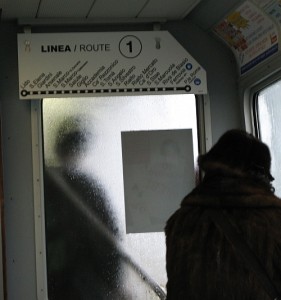
Why — I have asked myself ever since I first came here, back in the Bronze Age –why should public transport have been made so thrillingly complicated for ordinary people who, let’s face it, comprise 98 percent of the world’s population and 99.9 percent of the visitors to Venice? (I made that up, but it could still be true.)
I don’t know the answer. But I do know that many, many people whom I have seen with these very eyes have struggled not only with their luggage and their hysterical offspring and their own fatigue and lack of fluency in Italian, but with a bus system which gave you no intelligent means of knowing where you are or how to get where you’re going.
I have seen frantic people with big suitcases pull up to the Lido stop and ask the vaporetto conductor, “Is this the train station?” Not only is the correct answer “No, it’s not,” but the full phrase is “The station is at the other end of town and it will take you 50 minutes to get there. Sorry about you missing your train.” (Actually, they don’t say “Sorry.”)
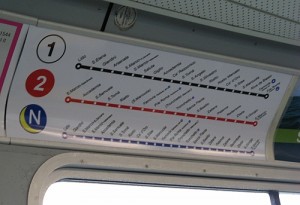
In any civilized settlement in the world, from Scott City, Kansas on up, the traveler would have had some means of confirming his progress by consulting a conveniently placed and easy-to-read map, then looking out the window at the name of the upcoming stop. It takes less than half a second to know if you’re headed in the wrong direction.
Of course there are plenty of maps around. Tiny, Gordian diagrams in guidebooks or given out by the hotel, with supposedly helpful colors and numbers of lines, but the colors twist themselves into macrame and some of the numbers no longer exist. You can spend a long time waiting for the #82 before you find out that it doesn’t run after September 13. And that it is now called the #2.
Or the route map on the bus-stop dock. It would be an intrepid traveler indeed to be able to read, and remember after boarding, what the next stops are called which lead toward one’s destination as one struggles through the wildebeest-migration that occurs on most docks.
Say what you will about the not-so-new mayor, Giorgio Orsoni; he seems to have put a few people in positions of authority who not only have intelligent, grown-up ideas on how to make things work, but have figured out how to bring them to pass before the next Ice Age, which by the way is probably never going to happen considering which way the climate is going. But you see my point.
So I give two thumbs-up to Carla Rey, the new councilor (or as I translate assessore, sub-mayor) for Commerce, Consumer Affairs, and Urban Quality. I don’t know that she is behind this leap into the future, but what she has done so far in other areas leads me to believe it’s highly likely. Hers is a title which never existed before and has a bracingly modern, Big-City ring to it.
“Urban”? Little old us?
So what’s my next Impossible Dream? Large to Very Large public trash bins placed everywhere. To be specific, I want there to be at least one large trash bin no further than 50 feet from any point in the entire city where you may be standing. Wherever you stop, you need to be able to see a trash bin. This is not, I can assure you, the case at the moment.
I know, it sounds like crazy talk. But now there are route maps on the vaporettos.
This changes everything.

